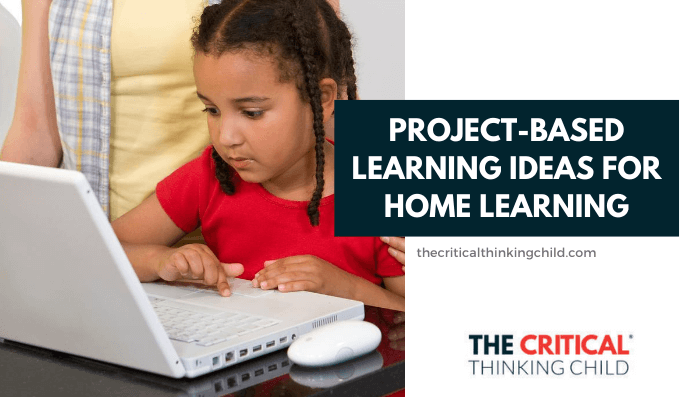With distance learning on the rise, parents are looking for new ways to engage their kids. During the summer months, in particular, children are looking for fun ways to spend their time.
If you haven’t yet incorporated project-based learning into your child’s schedule, now is the perfect time to do so.
What is project-based learning?
Project-based learning is a specific learning structure that teachers use regularly in the classroom. These projects are child-centered and often tackle real-world issues, which means they have the chance to apply their learning in a tangible way. Even better, these projects are often multi-faceted, calling upon numerous skills to complete them. That means learners of all types can challenge themselves in new, exciting ways.
Here are a few tips for setting your child up for success.
Focus on child-centered projects
Ownership is a huge part of project-based learning. This means that you don’t decide the project. Your child has their own unique interests and talents, so they get to decide the genre of the project. If they’re interested in animals, don’t force them to do a project about space. The goal here is to let the child lead and use their creativity to complete the project, which they’ll be much more likely to do if the topic interests them.
Make sure your child aims to tackle real world issues
Project-based learning needs to have a practical application to the real world. While your child may choose the overall topic and type of project, you can guide them to hone in on the real-world applications. Often, it starts with brainstorming different problems in the community that relate to their preferred topic, then coming up with a plan to solve it.
For example, if your child loves animals and wants to do a project around the topic, you could ask them to identify the current challenges zoos are facing as a result of the pandemic. Allow the project to grow from there.
Ideas for Project-Based Learning Activities
The ideas below will help you get started, but remember that your child gets to drive the project! You can make suggestions, but they should be able to choose the type of project they want to engage in.
Plant a garden
With warm temperatures and long days, planting a garden is a great first project for your family. Think together as a family about what you love to eat or don’t see enough in the grocery stores, and make a list of fruits, vegetables, and flowers you’ll want to grow. A garden project involves several different disciplines: math for measuring the garden and depth of the seeds, science for researching plant growth, and nutrition for learning about healthy foods to eat. You can even take this one step further and plan a special menu using the food you grew in the garden!
Create a family memory book
With platforms like Zoom and Google Hangouts, talking with faraway family members is easier than ever. Your child can put this time to good use by interviewing older relatives and creating a family memory book. Come up with a list of questions to ask and have your child take notes during the interview to practice their writing skills.
After that, they can create a scrapbook or memory book with quotes from the interviews, family pictures, and even a family tree! This hits on social studies standards of understanding family and community and allows your child to practice listening, speaking, reading, and writing.
Create a podcast, video, or TV show
This type of project is extremely open-ended and lets your child’s imagination really go wild. If your child is a Star Wars expert, they can create a podcast about their favorite scenes, film their own sequel, or write a spinoff TV show. If they’re interested in basketball, they can create how-to videos to teach other kids how to best shoot layups, or they can come up with a creative TV show based around a basketball team.
Put those phone cameras to good use and act as the videographer, but let your child do the rest and enjoy seeing what they come up with! You can even upload the final product to a private YouTube page to share with friends and family.
Design a museum exhibit
The local museums may be closed (or operating at a limited capacity), but that doesn’t mean your child can’t replicate the experience at home! Have them decide what kind of museum exhibit they want to build (art, science, history, etc.). Once they’ve honed in on a topic, encourage them to think about what their favorite museum exhibits include. Then set them free to develop their own exhibit! When they’re done you can have the whole family visit and ask questions.
Plan a road trip
Maybe you won’t be going on a real vacation anytime soon—but that doesn’t mean your travel-loving kid can’t think through an imaginary trip! If your child chooses this project, give them the chance to plan an itinerary and think through everything from the route (helping them learn valuable spatial skills like map-reading) to the budget. They can create a packing list, pick different attractions to visit, and then present the trip idea to the whole family.
Project-based learning is flexible and fun
As your child tackles new projects they’re exposing themselves to all kinds of different SMART Skills. They also give your young learner the opportunity to work independently, problem solve, and think analytically about real problems. Critical thinking for kids is often best taught organically.
The list above is no means exhaustive, so if you have other ideas, feel free to introduce them to your child. Or better yet, let them help you think of ideas! Then sit back and see the creative projects your kids come up with.
Sources Used:
Edmentum, “[Parent Tips] Project-Based Learning at Home”
PBLWorks, “PBL at Home: 3 Ideas for Projects Families Can Do”
Crafted Curriculum, “20 of the Best Project-Based Learning Ideas for 2020”



